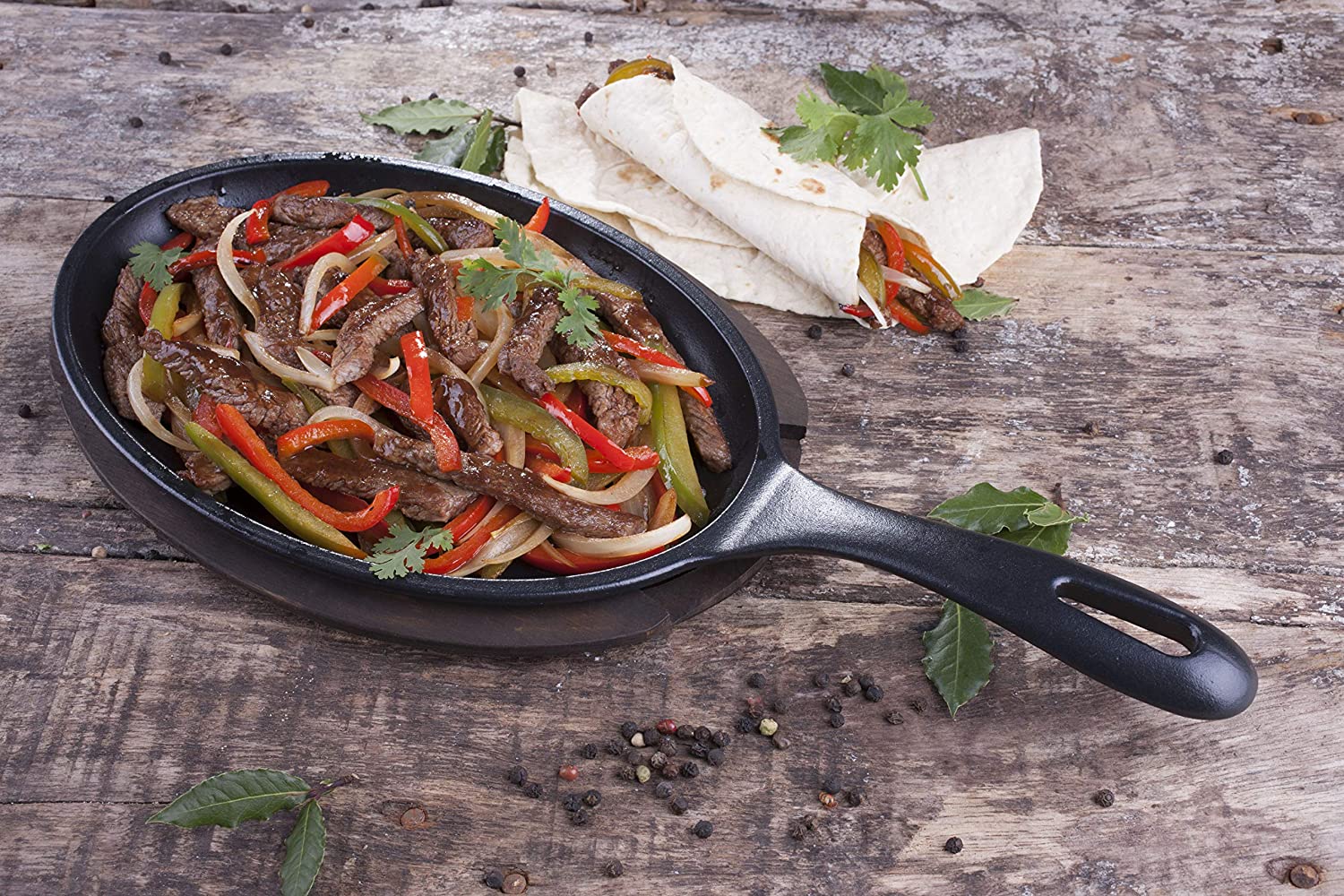How do you season cast-iron pans?
First, give the skillet a good scrub with hot, soapy water and dry it thoroughly
Next, use a paper towel, a pastry brush, or your fingers to apply a thin layer of vegetable oil, canola oil, or melted vegetable shortening all over the inside of the skillet. (Don’t use butter, which can burn at higher temperatures.) Then, place the cast-iron pan upside down on the middle oven rack, and let it bake for one hour at 375 degrees Fahrenheit.
If you’re worried about oil dripping, you can put a sheet of aluminum foil on the lower oven rack.
After the hour is up, turn the oven off, leave the skillet inside, and let it cool completely.
How often do you season cast-iron pans?
Seasoning your cast-iron skillet before cooking with it for the first time is a must, and you’ll need to reseason it occasionally too.
repeating the process two or three times a year after the inaugural seasoning, in order to maintain the nonstick coating and protect the surface of your pan.
Cleaning a cast-iron pan
After cooking with a cast-iron skillet, you’ll need to de-gunk it with a little care. Your basic goal when cleaning cast iron is to get rid of any food bits without stripping the pan of its hard-earned seasoning.
Do you put oil in a cast-iron skillet when cooking?
Cast iron has a reputation for being naturally non-stick, but you still might need to add some fat to your skillet depending on what you’re cooking and how well your pan is seasoned.
A cast-iron pan that’s fresh out of the box isn’t going to perform like Teflon. That’s why, as we mentioned above, seasoning it is so important. With a proper first seasoning, and proper maintenance over time, though, layers of fat (and flavor) will gradually build up on the skillet’s surface, nixing the need for extra oil.
What can you not put on a cast-iron skillet?
Acidic foods like tomatoes are generally a no-go for cast iron, especially in the beginning. You might want to think twice about foods that can leave aggressive lingering flavors too.Acidic sauces like tomato sauces loosen the seasoned bond that give your skillet its non-stick qualities. Cooking highly acidic foods for a while in a young pan may also cause tiny amounts of iron to leach into your food, giving it a weird metallic taste.The better seasoned the pan, the less both of these concerns should be an issue—but you’ll still want to avoid simmering a tomato sauce in cast iron, for instance.
Foods with a super assertive taste or smell, like fish, can potentially be problematic too.That doesn’t mean you can’t cook stuff like fish in cast iron though. It just might be worth investing in a separate skillet that you use only for seafood, Baron adds.
Post time: Mar-30-2022
